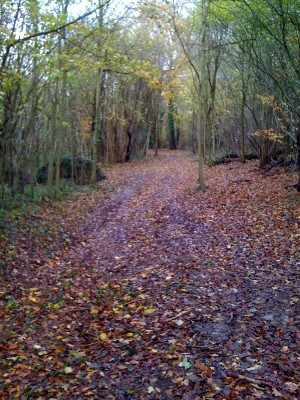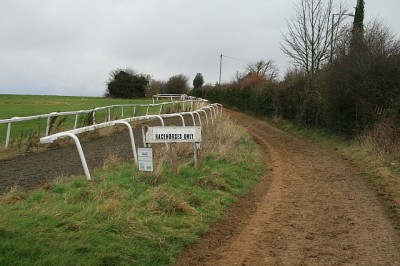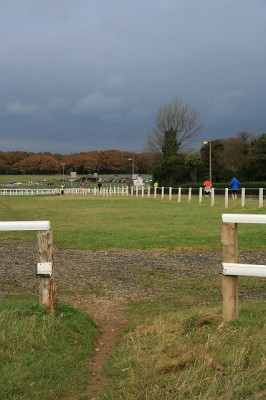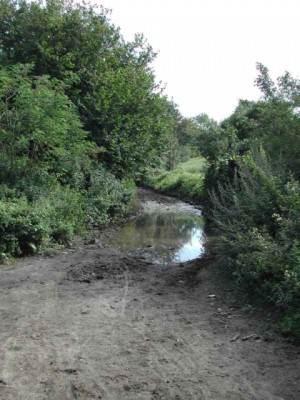The plans for two concerts on Epsom Downs have attracted widely differing views from local people. Some seem happy to put up with some disruption, particularly in the aftermath of Derby week, perhaps intending to attend one of the concerts themselves. Others see the disturbance, particularly the probably noise, as an unacceptable intrusion during the evenings into an essentially residential community.
Riders are likely to have just the same diversity of views: some might want to go along to the concert, others (many of whom will be local residents) will be resentful. But riders have a particular reason to oppose the plans: the concert will be staged at the eastern end of The Hill, and exclude public access from one of the most popular hack riding areas on the downs for perhaps a fortnight. It also remains to be seen whether the events will cause lasting damage to the ground, and whether the clean-up will be sufficient. And while the racecourse is offering a sweetener to the conservators of £50,000 in the first year, no-one has adequately explained how that figure has been arrived at, whether it is a fair contribution, how it will be spent, nor who might benefit. Reinstatement of the ends of the sand track at the foot of Six Mile Hill would be welcome, but it’s more likely to be spent on new downskeepers’ accommodation: an understandably pressing cause, but one which should be funded by the conservators out of current income.
There are three challenges I would make to the plans as currently described:
1. The conservators have powers (under the Epsom and Walton Downs Regulation Act 1984) to authorise events involving “a significant degree of interference with the rights of the public of access for air and exercise” for not more than five days a year. Yet the promoters’ own plans suggest that the concert arena will be closed off with fencing for as long as 12 days. In an effort to get round the problems, the promoters are talking of keeping open walkways across the arena during the construction period, but these too will be fenced off (so who’d want to use them?) and completely unsuitable for riders’ use (even if they are ostensibly made available for that purpose). In effect, the public will be excluded from the arena for far longer than the period allowed in the 1984 Act. That’s without even considering the impact of the stage and backstage area, which will be put up (and the public excluded) even before the Derby, for nearly three weeks!
Q1. Under what powers do the conservators claim to be able to exclude access from such a significant part of the downs for up to a fortnight or even three weeks?
2. The racecourse and the promoters plan to charge for car parking for concert-goers. The 1984 Act allows the racecourse to set out parking places and to charge for parking, but only in connection with horse racing. Any parking places are required to be removed ‘as soon as practicable’ after the end of each race meeting, and in any event, within 10 days. The racecourse cannot charge for parking for other events, if, at the very time it is charging for that parking, it is under a duty to remove the temporary parking places for which it is levying the charge! The conservators have been advised that their powers to authorise special events are so wide that they can authorise anything in connection with the events, even though a power to charge cannot be inferred from the 1984 Act without specific words to that effect.
Q2. What powers does the racecourse have to charge for parking on the downs, and what powers do the conservators have to authorise such charging, given that the 1984 Act confers powers to charge for car parking only in relation to horse racing?
3. The plans involve the closure of bridleway 127 between the two racecourse crossings, and restricted use of the Old London Road access way across the racecourse and the metalled road to the milepost car park, for the whole of the period between the Derby and the concerts (and possibly beyond). The conservators have resolved to impose a condition that “all public rights of way across the downs to remain open” and then contradicted their own resolution by continuing “and arrangements for temporary diversions to be made where necessary”, and have failed to explain what powers might be used for that purpose. In fact, there are no powers to temporarily divert the bridleway, and a closure could only be authorised by the county council.
Q3. What powers will be used to close bridleway 127 and the access road to the car park for up to a fortnight? On what grounds?
That’s not all: the whole basis on which the conservators have approached their approval for the event is questionable, and I wrote to David Smith, clerk to the conservators, on 30 August 2008. But these are the key points.
 To find it, head south-west along the valley track from Walton Road, running parallel to Langley Vale Road. At the junction where the ‘racehorses only’ track bears left, and the main track continues down the valley, go slightly left between the two, and pick up a well-defined track through the woods, which emerges opposite the start of the fibresand track.
To find it, head south-west along the valley track from Walton Road, running parallel to Langley Vale Road. At the junction where the ‘racehorses only’ track bears left, and the main track continues down the valley, go slightly left between the two, and pick up a well-defined track through the woods, which emerges opposite the start of the fibresand track.


 and out onto Epsom Lane North, emerging opposite Royal Drive.
and out onto Epsom Lane North, emerging opposite Royal Drive.
